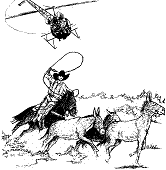Vertebrate Pest Conference Proceedings collection
Date of this Version
3-1-1984
Document Type
Presentation
Abstract
In China, the earliest record, "The Book of Song," vividly describes that farmers complained of rodent damage and earnestly hoped rodents did not eat their crops. It will be seen from this that since the spring and autumn period (770-476 B.C.), rats, mice and voles have been among the major problems of China. It is said that there are 400 species of mammals in China and 150 species of them are rodents, of which 25-30 species of rodents are usually considered serious pests. Large amounts of grassland, forests and agricultural crops are destroyed or seriously damaged every year. There is no accurate estimation of the total loss. According to the Xia Wuping's report (1976), a great outbreak of house mice occurred in the agricultural fields in Northern Xinjiang during 1967-1968. The loss of crops due to house mice was roughly estimated at 300 million Jin (equal to 150 million kg.). During a survey taken in the grassland in Qinghai Province, it was shown that a population of 16.5 plateau pikas (Ochotona curzoniae Hodgson) per Mu (a unit of area equal to 0.0667 hectares) caused 50% of damage to grasses. The first acute rodenticides used for rodent control were white arsenic and yellow phosphorus (Horng 1959, Ku 1982). These have now been replaced by more suitable chemicals. Acute rodenticides have had a relatively long history of use in China and have played a very important role in rodent pest control. But, at the moment, some of them are becoming a subject of heated dispute and the target of public criticism. Therefore people follow with interest the development of debate and pay close attention to the future and destiny of acute rodenticides. In this paper I will briefly look back at the history of acute rodenticides used in China and evaluate their achievements and errors.

